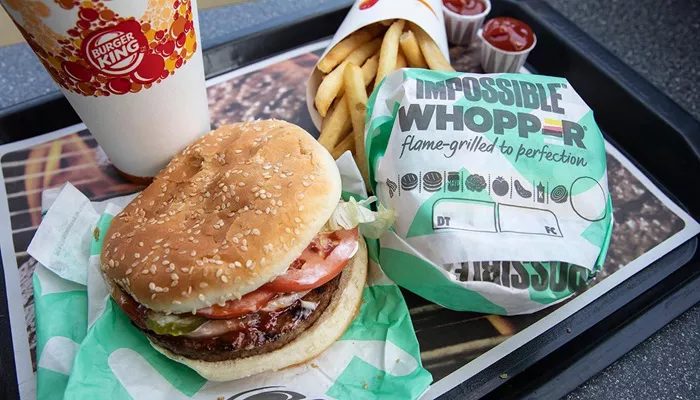Burger King is renowned for its flame-grilled hamburgers, particularly the iconic Whopper. The process of making these hamburgers involves a series of meticulous steps that ensure quality, flavor, and safety. This article will provide a detailed overview of how Burger King’s hamburgers are made, from sourcing ingredients to the final assembly in restaurants.
How Are Burger King Burgers Cooked
1. Sourcing Quality Ingredients
The journey of a Burger King hamburger begins long before it reaches the grill. Quality ingredients are crucial for creating delicious and safe food. Burger King sources its beef from USDA-approved suppliers, ensuring that only grade A beef is used.
This beef is 100% real with no fillers or artificial preservatives. The company emphasizes the importance of using high-quality ingredients and has implemented strict supplier quality assurance programs.
Supplier Standards: Suppliers must meet rigorous standards set by Burger King, which include certification under the Global Food Safety Initiative (GFSI). This certification ensures that suppliers adhere to strict food safety protocols, including Hazard Analysis Critical Control Points (HACCP) and Good Manufacturing Practices (GMP).
Ingredient Testing: Before any ingredient is used, it undergoes extensive testing to check for microbial contamination and quality parameters. Each batch of meat, for example, is tested multiple times throughout the supply chain to ensure safety and quality.
see also: How Much Is The Italian Chicken Sandwich at Burger King
2. Preparing the Beef Patties
Once the beef is sourced and tested, it undergoes a careful preparation process:
Thawing: The frozen beef is carefully thawed in controlled environments to maintain its quality and prevent bacterial growth.
Grinding: The thawed beef is then minced into smaller chunks. This step is crucial as it prepares the meat for forming patties while ensuring even texture.
Forming Patties: The minced meat is shaped into patties using a patty former. Each patty is designed to be uniform in size and thickness to ensure even cooking.
Freezing: After forming, the patties are quickly frozen again to lock in freshness and flavor until they are ready to be cooked.
3. Cooking Process
The cooking method at Burger King sets it apart from many other fast-food chains. The burgers are flame-grilled rather than fried, which imparts a unique smoky flavor that customers love.
Flame-Grilling: When an order is placed, the frozen patties are placed on a preheated grill. The flame-grilling process allows for even cooking while retaining moisture within the patty. This method also creates those signature grill marks that enhance both appearance and taste.
Cooking Time: Each patty is cooked for approximately 2-3 minutes on each side, depending on the thickness and desired doneness. The internal temperature of the beef must reach at least 160°F (71°C) to ensure safety.
Quality Control: During cooking, employees monitor temperatures and cooking times closely to maintain consistency across all burgers served.
4. Assembling the Hamburger
Once cooked, the patties are ready for assembly into delicious hamburgers. The assembly line process is efficient and ensures that each hamburger meets Burger King’s quality standards.
Bun Preparation: The hamburger buns are toasted lightly on the grill or in a toaster to enhance their flavor and texture. A toasted bun helps prevent sogginess from sauces and toppings.
Adding Condiments: The top bun is often slathered with mayonnaise or other sauces as per customer preference. This adds moisture and flavor to the burger.
Layering Ingredients: Fresh ingredients such as crisp lettuce, ripe tomatoes, crunchy pickles, and onions are added next.
These ingredients not only add flavor but also provide texture and freshness.
Placing the Patty: The flame-grilled beef patty is placed atop the fresh vegetables, allowing its juices to mingle with the toppings below.
Final Touches: Additional condiments like ketchup or mustard may be added before placing the bottom bun on top to complete the hamburger.
Food Safety Measures
Burger King places a strong emphasis on food safety throughout its operations:
HACCP Principles: All restaurants operate under HACCP principles designed to identify potential hazards in food preparation processes and implement controls to mitigate risks.
Staff Training: Employees undergo comprehensive training in food safety practices to ensure they understand proper handling techniques for raw ingredients and cooked products.
Regular Audits: Independent third-party audits are conducted regularly to assess compliance with food safety standards across all locations.
Conclusion
The process of making Burger King’s hamburgers involves several critical steps that prioritize quality, flavor, and safety.
From sourcing high-quality beef to flame-grilling patties and assembling fresh ingredients, every aspect of production is carefully managed to deliver delicious hamburgers that customers love. With strict adherence to food safety protocols and acommitment to quality ingredients, Burger King continues to be a leader in the fast-food industry, providing satisfying meals that meet customer expectations for taste and safety.
Related topics:
- When Does Burger King Open for Breakfast?
- What Flavor Milkshakes Does Burger King Have?
- Which Burger King Stores Have Closed by 2024?

